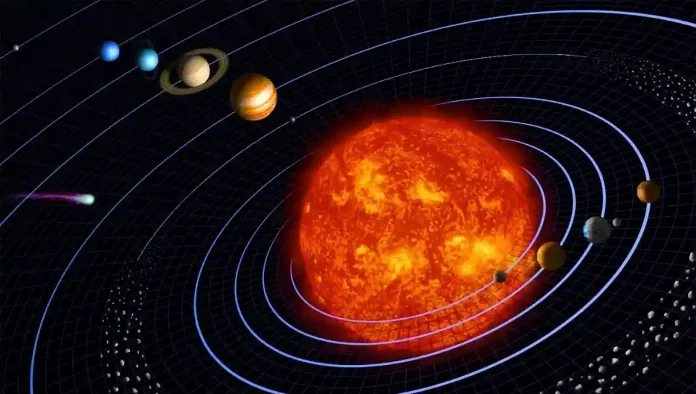Planets of our Solar System is most important topic for education purpose. In this article planets and their features are discussed briefly.
1. Mercury
Closest planet to the Sun, orbiting it once every 88 Earth days
Small and rocky, with a diameter of about 4,880 km
Extreme temperature variations, ranging from -173°C to 427°C due to its proximity to the Sun
Has no atmosphere and no moons
Has many craters, including the Caloris Basin, one of the largest impact craters in the solar system
2. Venus
Second planet from the Sun, often called the “morning star” or “evening star”
Similar in size and composition to Earth, with a diameter of about 12,104 km
Has a thick and toxic atmosphere made mostly of carbon dioxide and sulfuric acid clouds, which creates a strong greenhouse effect and makes its surface very hot (462°C)
Has no moons, but has many volcanoes, including the largest volcano in the solar system, Maat Mons
Known for its bright appearance and is often visible from Earth
3. Earth
Third planet from the Sun, the only known planet with life
Has a diameter of about 12,742 km and is the largest of the terrestrial planets
Has a moderate climate and a protective atmosphere that sustains life
Is 71% covered in water, and has many unique features, including plate tectonics and magnetic fields
Has one moon, which affects tides and other natural processes on Earth
4. Mars
Fourth planet from the Sun, often called the “Red Planet”
Has a diameter of about 6,779 km, about half the size of Earth
Has a thin atmosphere mostly made of carbon dioxide and nitrogen, and is very cold, with temperatures ranging from -140°C to 20°C
Once had liquid water on its surface and has many features that suggest the possibility of past or present life
Has two small moons, Phobos and Deimos
5. Jupiter
Fifth planet from the Sun, the largest planet in the solar system
Has a diameter of about 139,822 km, over 11 times the size of Earth
Mostly composed of hydrogen and helium gas, with no solid surface
Has a famous “Great Red Spot,” a giant storm larger than the size of Earth
Has at least 79 known moons, including the four largest: Io, Europa, Ganymede, and Calisto
6. Saturn
Sixth planet from the Sun, known for its prominent rings made of ice and rock particles
Has a diameter of about 116,460 km, nearly 9 times the size of Earth
Mostly composed of hydrogen and helium gas, with no solid surface
Has at least 82 known moons, including Titan, the second largest moon in the solar system
Has the largest and most complex ring system in the solar system
7. Uranus
Seventh planet from the Sun, tilted on its side
Has a diameter of about 50,724 km, about 4 times the size of Earth
Mostly composed of hydrogen and helium gas, with a small rocky core
Has a unique blue-green color due to the presence of methane gas in its atmosphere
Has at least 27 known moons and faint rings
8. Neptune
Eighth planet from the Sun, farthest planet in the solar system
Has a diameter of about 49,244 km, slightly smaller than Uranus
Mostly composed of hydrogen and helium gas, with a small rocky.
In the planets of our Solar System, Sun, Moon and brightest planets are visible to the naked eyes.
